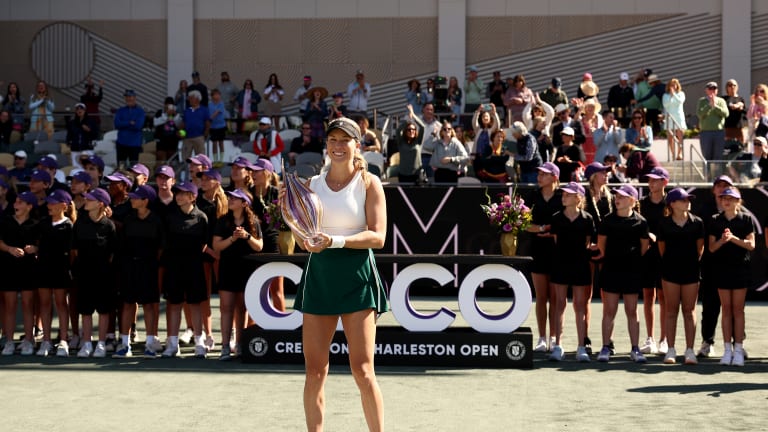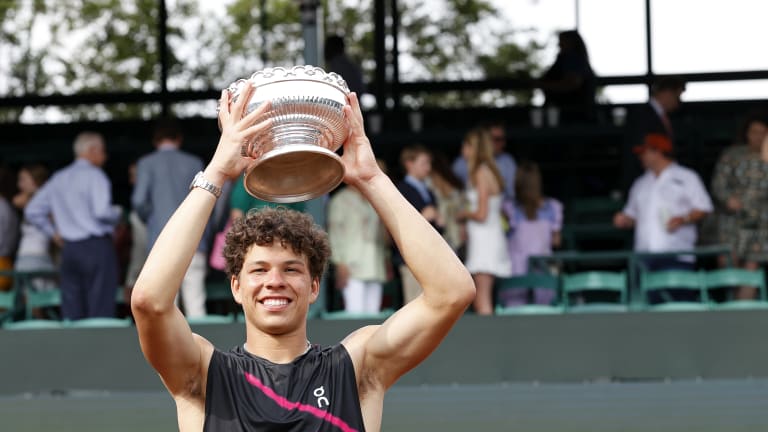Weekend Winners
In Charleston and Houston, Danielle Collins and Ben Shelton pulled off a rare U.S. double on the dirt
By Apr 08, 2024Weekend Winners
Sabalenka, Medvedev, Swiatek, Bencic, Bublik: Who had the most significant win of week one?
By Jan 11, 2026Weekend Winners
Joao Fonseca and Jannik Sinner played their best when it counted in Basel and Vienna
By Oct 26, 2025Weekend Winners
Coco Gauff again treated Asia like a practice session—and again left with a big title, in Wuhan
By Oct 12, 2025Weekend Winners
“We’re working on new things,” Jannik Sinner says after Beijing triumph
By Oct 01, 2025Weekend Winners
Carlos Alcaraz says 2025 is his "best season so far without a doubt" after winning in Tokyo
By Sep 30, 2025Weekend Winners
Clutch play wins team comps for Jasmine Paolini, Taylor Fritz; Iga Swiatek shines in Seoul
By Sep 22, 2025Weekend Winners
Teen queens crowned: Iva Jovic, Tiantsoa Rakotomanga Rajaonah claim first WTA titles
By Sep 15, 2025Weekend Winners
How Carlos Alcaraz put a 'difficult month' behind him with his first Monte Carlo title
By Apr 13, 2025Weekend Winners
With clay titles, Jenson Brooksby and Jessica Pegula made 2025 all the more promising
By Apr 07, 2025In Charleston and Houston, Danielle Collins and Ben Shelton pulled off a rare U.S. double on the dirt
Is it a good sign, or a one-off, as the tours head to Europe?
Published Apr 08, 2024
Advertising
Advertising

Collins has now won 26 of 27 sets in her 13-match winning streak, and is back in the Top 20.
© Getty Images
Advertising
Advertising

Ben Shelton went to three sets in three of his four wins in Houston.
© Getty Images